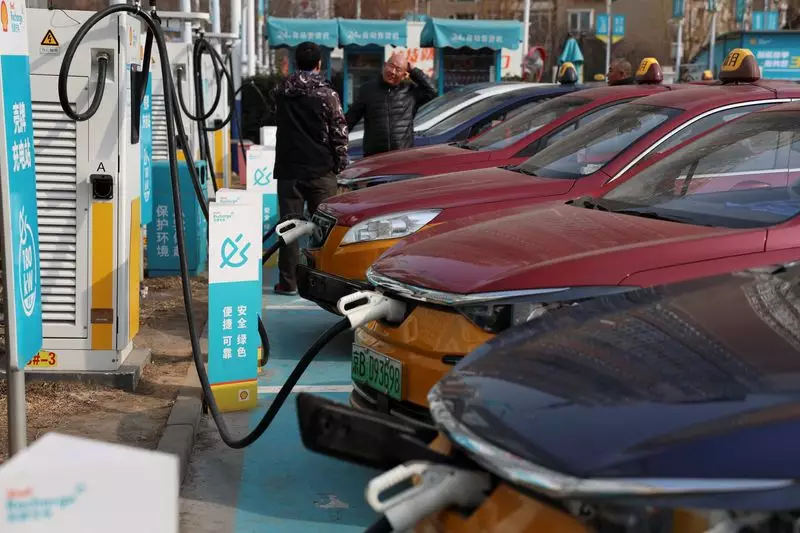China, the world’s largest auto market, is undergoing a significant transition towards electric vehicles (EVs). With EV sales expected to make up 40% of the 23 million cars sold this year, the demand for gasoline is predicted to peak by 2025 and could halve by 2045. This shift has prompted major oil companies like Sinopec and PetroChina to adapt their business models to accommodate the growing dominance of battery-powered vehicles. As a result, thousands of fast electric vehicle charging points, like the Xiaowuji battery charging station in suburban Beijing, are being built across the country to cater to the evolving needs of consumers.
Despite the rapid expansion of EV charging infrastructure in China, several challenges confront the industry. Market fragmentation, overcapacity, low utilization rates, and financial losses pose significant hurdles for oil companies venturing into the EV charging sector. Many public EV charging stations, like the Xiaowuji station, experience idle charging points, with an estimated 54 out of 70 points remaining vacant on a typical weekday afternoon. This low utilization is exacerbated by the proliferation of slower, non-public chargers accessible to the majority of EV owners within their housing complexes.
To address the evolving landscape of EV charging in China, major oil companies like Sinopec and PetroChina have outlined ambitious plans to invest significantly in charging infrastructure. Sinopec, which currently operates 21,000 charging points, has allocated 18.4 billion yuan to expand its integrated energy station network, with a goal of constructing 5,000 charging stations by 2025. PetroChina, on the other hand, aims to bolster its marketing and distribution efforts by increasing capital spending by 49.8% and building 1,000 EV battery swapping stations this year. Despite their aggressive expansion plans, both companies face challenges in capturing market share in a highly fragmented and competitive charging market.
International energy companies like Shell and TotalEnergies, with experience in mature EV markets like Norway, are leveraging their expertise to navigate the complexities of the Chinese EV charging landscape. TotalEnergies, in partnership with China Three Gorges Group, is in the process of building 11,000 charging points and has integrated additional services like car wash facilities and food offers to enhance the customer experience. Similarly, Shell has reported better utilization rates in China compared to local charging operators, attributing their success to a focus on customer-centric services and strategic location planning.
As the EV market continues to evolve in China, stakeholders in the charging industry must prioritize improving utilization rates, enhancing customer experiences, and streamlining operations to ensure financial sustainability. Consolidation within the sector is anticipated, with power grid operators emerging as potential winners in the reshaped EV charging landscape. Despite the challenges, the future of EV charging in China presents abundant opportunities for innovation, collaboration, and sustainable growth as the country accelerates its transition towards a greener, electrified transportation future.

